In the spirit of Holi, the festival of colors, we’ve embraced the fusion of tradition and technology by creating stunning, vibrant images using AI image generators like Dall-E and Bing AI. This innovative approach allows us to capture the essence of Holi in a way that’s both imaginative and deeply respectful of the festival’s rich heritage. By inputting detailed prompts that reflect the joy, community, and color of Holi, we’ve generated unique pieces of art that celebrate this auspicious occasion. Each image, with its explosion of colors and scenes of jubilation, not only pays homage to the traditional aspects of Holi but also showcases the incredible potential of AI in the realm of creative expression. Through our blog, we invite you on a visual journey that marries the ancient with the cutting-edge, offering a fresh perspective on Holi celebrations.
Currently browsing: Artificial Intelligence (AI)
Latest trends in technology, through the lens of AgilizTech
Category: Artificial Intelligence (AI)
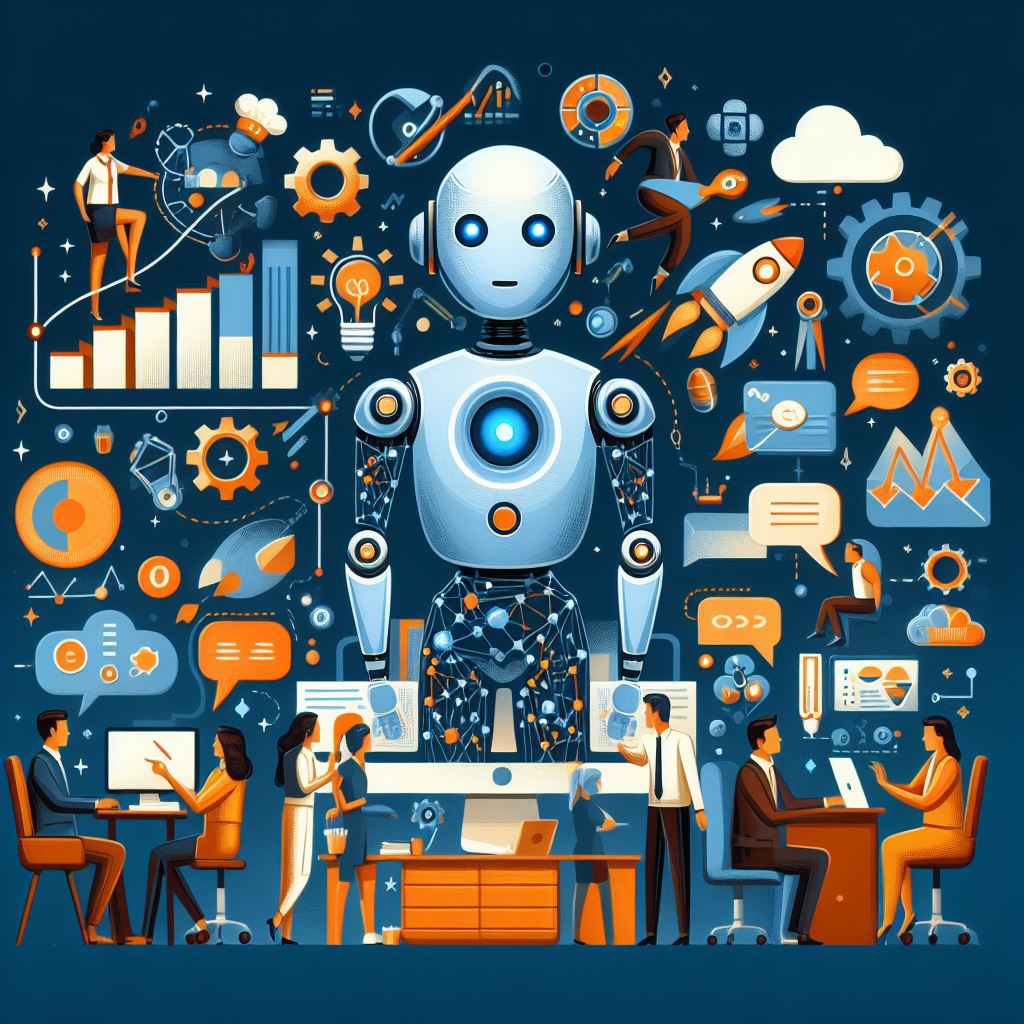
Launched Copilot for Microsoft 365: AI-Powered Productivity and Creativity for Organizations
Microsoft has launched a new premium subscription service called Copilot Pro for individuals. The subscription costs $20 per month and provides advanced AI capabilities, access to Copilot in Microsoft 365 apps, priority access to the latest models, enhanced AI image creation, and the ability to create Copilot GPTs 12.
For organizations, Microsoft has launched Copilot for Microsoft 365, a subscription that provides AI-powered productivity and creativity across emails, meetings, chats, documents, and more, plus the web. It is now available for businesses of all sizes, including small- and medium-sized businesses, and through Microsoft Cloud Solution Provider partners 3.
Copilot GPTs is a new feature that lets users customize the behavior of Copilot on a specific topic. A handful of Copilot GPTs are available today, and Copilot Pro users will soon be able to create their own Copilot GPTs using Copilot GPT Builder 12.
Microsoft has also launched a new Copilot mobile app that gives users the power of Copilot on the go, with access to GPT-4, Dall-E 3, and image creation. The app is available for Android and iOS users and has the same capabilities as the PC version. It is also available in the Microsoft 365 mobile app for Microsoft account holders 4.
In summary, Microsoft has launched a suite of new products and features under the Copilot brand. Copilot Pro is a premium subscription service for individuals that provides advanced AI capabilities, access to Copilot in Microsoft 365 apps, priority access to the latest models, enhanced AI image creation, and the ability to create Copilot GPTs. Copilot for Microsoft 365 is a subscription service for organizations that provides AI-powered productivity and creativity across emails, meetings, chats, documents, and more, plus the web. Copilot GPTs is a new feature that lets users customize the behavior of Copilot on a specific topic. Copilot mobile app is a new app that gives users the power of Copilot on the go, with access to GPT-4, Dall-E 3, and image creation1324
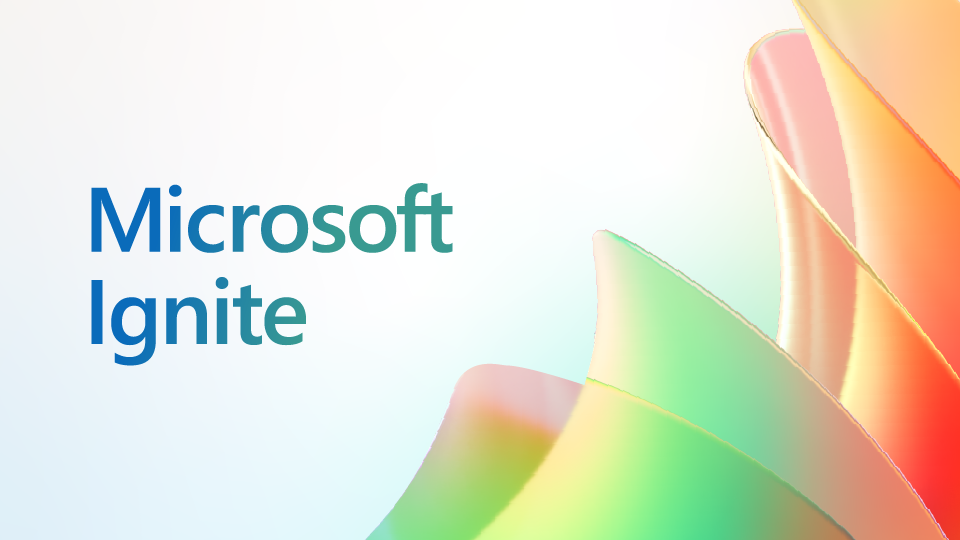
Microsoft Ignite 2023: A Brief Summary
In the Microsoft Ignite 2023 event, Microsoft outlines how AI transformation is reshaping work and how Microsoft is supporting customers, partners and developers with its AI solutions. It covers:
- Rethinking cloud infrastructure with new AI optimized silicon, Azure Boost, and partnerships with AMD and NVIDIA.
- Extending the Microsoft Copilot experience across Microsoft 365, Copilot Studio, Copilot for Service, Copilot in Microsoft Dynamics 365 Guides, and Bing Chat and Bing Chat Enterprise.
- Bringing Copilot to everyone with the general availability of Bing Chat and Bing Chat Enterprise as Copilot.
- Reinforcing the data and AI connection with Microsoft Fabric, a unified platform for data management and AI tools, and integration with Microsoft Office and Teams.
- Unlocking more value for developers with Azure AI Model-as-a-Service, Azure AI Studio, Vector Search, and new GPT models.
- Enabling the responsible deployment of AI with the Copilot Copyright Commitment, Azure AI Content Safety, and new AI and productivity tools for developers.
- Introducing new experiences in Windows to empower employees, IT and developers with Windows AI Studio and NVIDIA AI foundry service.
- Strengthening defenses in the era of AI with the Unified Security Operations Platform and Security Copilot embedded within Microsoft Defender XDR and other Microsoft security products.
Page Reference – Microsoft Ignite 2023: AI transformation and the technology driving change – The Official Microsoft Blog
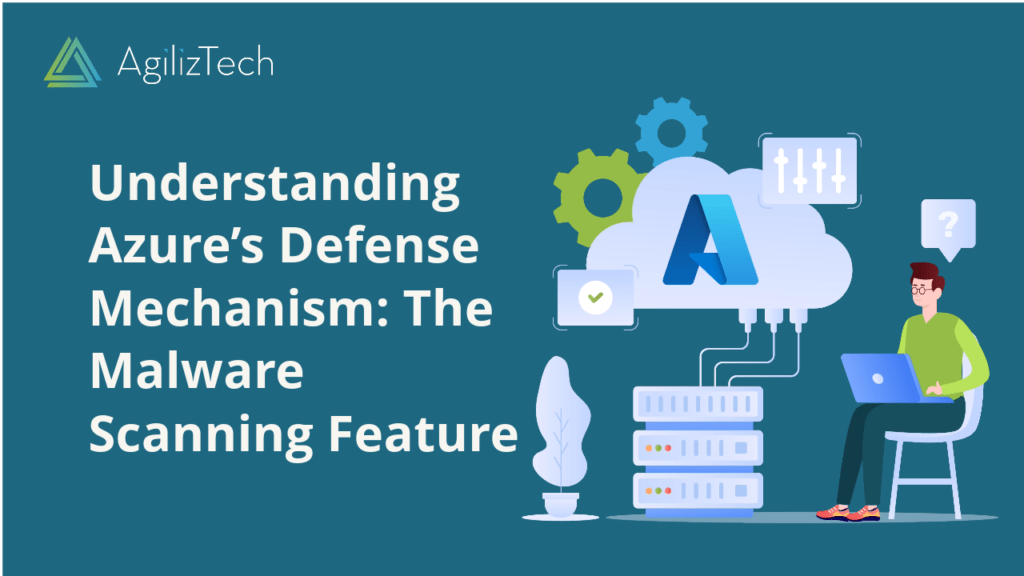
Azure Malware Scanning: A Comprehensive Guide
Are you looking for a way to protect your Azure storage accounts from malware threats? Do you want to ensure that your data is safe and secure in the cloud? If yes, then you need to know about Azure Malware Scanning in Defender for Storage.
Azure Malware Scanning is a feature that scans your Azure Blob storage accounts for malware infections. It detects and alerts you of any malicious files that may compromise your data or applications. You can also use it to quarantine or delete the infected files automatically.
This blog post will explain Azure Malware Scanning, its benefits, and usage.
What is Azure Malware Scanning in Defender for Storage?
Azure Malware Scanning is a feature that leverages Microsoft’s threat intelligence and machine learning to scan your Azure Blob storage accounts for malware. It supports both block blobs and append blobs, and scans both new and existing files.
Azure Malware Scanning is part of Azure Defender for Storage, a security service providing advanced threat protection for your Azure storage accounts. Azure Defender for Storage also offers anomaly detection, encryption enforcement, firewall auditing, and more.
What are the advantages of Azure Malware Scanning in Defender for Storage?
Malware Scanning in Defender for Storage offers several advantages for your cloud security, such as:
- Helps you prevent data breaches and comply with regulatory standards by detecting and removing malware from your storage accounts.
- Saves you time and resources by scanning your files automatically and continuously without requiring any manual intervention or configuration.
- Gives you visibility and control over your storage security by providing you with alerts, reports, and remediation options.
- Integrates with other Azure services and tools, such as Azure Security Center, Azure Sentinel, Azure Monitor, and Microsoft 365 Defender.
How to use?
To use Malware Scanning in Defender for Storage, you need to follow these steps:
- Enable Azure Defender for Storage on your subscription or resource group level. You can do this from the Azure portal, PowerShell, or CLI.
- Configure the malware scan settings for your storage accounts. You can choose to scan all or selected containers and specify the action to take when malware is detected. You can quarantine, delete, or log the infected files.
- Monitor the scan results and alerts from the Azure portal, Security Center, Sentinel, or Monitor. You can also view the scan reports and statistics from the Defender dashboard.
- Review and remediate the infected files from the quarantine container or the log file. If you’ve accidentally deleted some files, don’t worry! You can still retrieve them using the soft delete feature.
That’s it! You have successfully enabled and used Malware Scanning in Defender for Storage. Now, you can enjoy a more secure and reliable cloud storage experience.
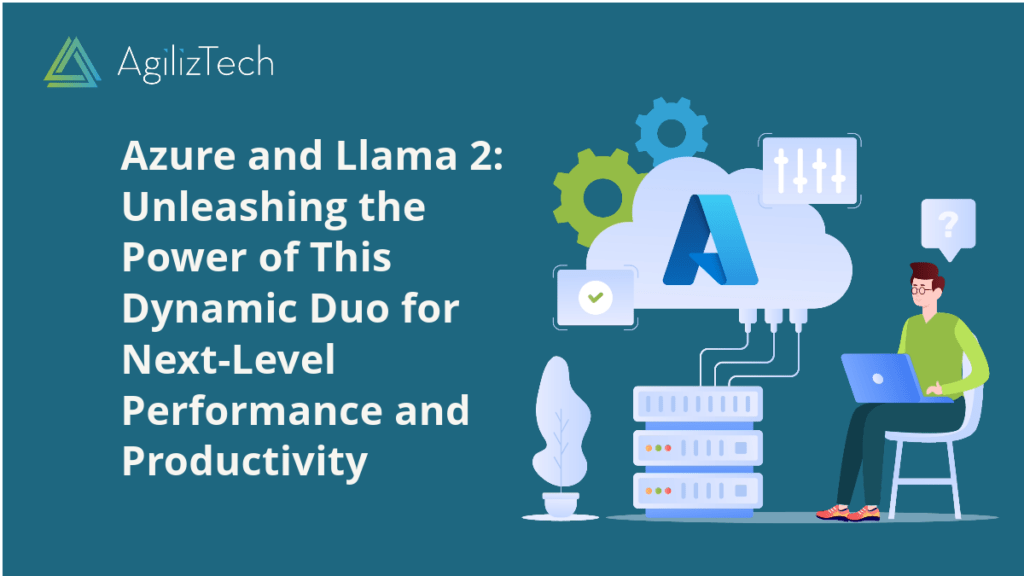
Azure and Llama 2: A Powerful Combination
Are you looking for a cloud platform that offers high performance, scalability, security, and flexibility? If so, you should consider Azure and Llama 2, the latest version of the popular open-source framework for building cloud-native applications. In this blog post, we will explore the features and benefits of Azure and Llama 2 and show you how to get started with them.
What is Azure?
Azure is Microsoft’s cloud computing platform that provides a range of services and solutions for various scenarios, such as web hosting, data analytics, artificial intelligence, Internet of Things, and more. Azure has over 200 products and services that you can use to build, deploy, and manage your applications on the cloud. Some of the advantages of Azure are:
- Supports multiple languages, frameworks, and tools, such as .NET, Java, Python, Node.js, Visual Studio, GitHub, etc.
- Offers global coverage with more than 60 regions and 170+ data centers worldwide.
- The pay-as-you-go pricing model lets you only pay for what you use, with no upfront costs or termination fees.
- Built-in security features and compliance standards protect your data and applications from threats and breaches.
- A rich ecosystem of partners and third-party integrations that enhance its capabilities and functionality.
What is Llama 2?
Llama 2 is the second major release of Llama, an open-source framework for building cloud-native applications using microservices architecture. Llama 2 aims to simplify the development, deployment, and management of microservices on the cloud. Some of the features of Llama 2 are:
- Supports multiple programming languages, such as Java, Kotlin, Scala, Groovy, etc.
- Provides a set of libraries and tools that help you create, test, and run your microservices, such as Llama Boot, Llama Cloud, Llama CLI, etc.
- Enables you to use various cloud services and platforms, such as Azure, AWS, Google Cloud Platform, Kubernetes, Docker, etc.
- Offers a reactive and non-blocking approach that improves the performance and scalability of your applications.
How do you use Azure and Llama 2 together?
Using Azure and Llama 2 together can help you leverage the best of both worlds: the power and flexibility of Azure’s cloud services and the simplicity and productivity of Llama’s microservices framework. Here are some steps to get started with Azure and Llama 2:
- Create an Azure account if you don’t have one already. You can get a free trial with $200 credit for 12 months.
- Install Llama CLI on your local machine. You can download it from the official website or use a package manager such as Homebrew or Chocolatey.
- Create a new Llama project using the command `llama init`. You can choose from various templates and options to suit your needs.
- Add Azure dependencies to your project using the command `llama add azure`. This will enable you to use Azure’s services such as App Service, Cosmos DB, Service Bus, etc.
- Deploy your project to Azure using the command `llama deploy azure`. This will create or update the necessary resources on Azure and upload your application code.
- Enjoy your cloud-native application running on Azure!
Conclusion
Azure and Llama 2 are a powerful combination for cloud computing that can help you build modern, scalable, secure, and flexible applications on the cloud. You can use them together to create microservices-based applications that take advantage of Azure’s rich features and services.

ChatGPT Enterprise: The Future of Communication
Overview
In the fast-paced realm of AI-driven communication, businesses crave innovative solutions that meet their conversational needs and prioritize security and privacy. Enter ChatGPT Enterprise, a dynamic platform that enhances interactions and fortifies data. In this blog post, we’ll delve into what ChatGPT Enterprise brings to the table and how you can harness its potential.
Security and Privacy Reinvented
In the digital age, safeguarding sensitive data is paramount. ChatGPT Enterprise actively takes security to new heights. It employs advanced security measures, such as robust data encryption and stringent access controls, to safeguard your information from prying eyes. This guarantees that your business can communicate securely, knowing your data is protected.
OpenAI’s unwavering commitment to privacy is evident in ChatGPT Enterprise. This AI respects user confidentiality, strictly adhering to data usage policies. Knowing that your conversations are not subject to data mining for personal information, you can have peace of mind, creating a safer and more ethical conversational experience.
Advantages of ChatGPT Enterprise
It delivers a wealth of benefits:
Customization: Tailor the AI to suit your business’s unique requirements, fine-tuning it to comprehend industry-specific terminology and nuances, making it a versatile asset across various domains.
Scalability: Seamlessly adapts to your business’s growth, whether you’re a budding startup or an international conglomerate.
Enhanced Precision: The AI’s precision in providing responses and context-aware suggestions elevates the caliber of your interactions.
24/7 Availability: It is at your service around the clock, offering constant support to your customers.
Cost-Efficiency: Automate routine tasks and streamline your support teams’ workload, resulting in substantial cost savings.
Statistics Speak Volumes
- The impact of OpenAI’s ChatGPT Enterprise is undeniable. In a recent survey by OpenAI, businesses using it reported a remarkable 30% reduction in response time and an impressive 20% increase in customer satisfaction.
- According to a recent study by Gartner, chatbots can reduce customer service costs by up to 30%, increase customer satisfaction by up to 40%, and generate up to 20% more revenue.
How to Dive into ChatGPT Enterprise
Embarking on your Chat GPT Enterprise journey is straightforward. Here’s a step-by-step guide:
- Request Access: Start by visiting the [OpenAI website](https://www.openai.com/chatgpt) to initiate your access request.
- Customize Your Model: Collaborate closely with OpenAI’s experts to tailor the AI to your specific requirements.
- Seamless Integration: Integrate ChatGPT seamlessly into your existing communication platforms or websites.
- Training: Familiarize your team with the AI and its capabilities to ensure optimal utilization.
- Launch: Deploy ChatGPT Enterprise and begin reaping the benefits of enhanced customer interactions.
In conclusion, ChatGPT Enterprise stands as a game-changer in the realm of AI-driven communication. With robust security, enhanced privacy, and a plethora of advantages, it empowers businesses to communicate more effectively and efficiently. Don’t miss the opportunity to elevate your customer interactions – request access to it today. Your business deserves nothing but the best in AI-powered communication.
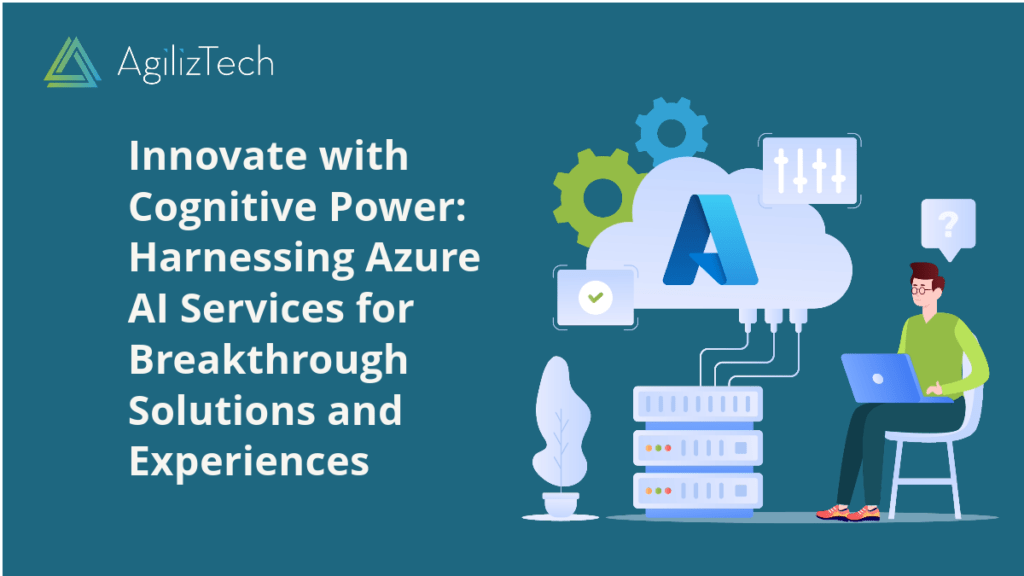
Azure AI Services: Innovate with Cognitive Power
Introduction
In today’s fast-paced digital world, the power of artificial intelligence (AI) is indispensable for creating user-centric applications. Microsoft Azure offers a suite of AI-driven services under Azure Cognitive Services; each designed to enhance user experiences and streamline operations. Let’s delve into these nine Azure Cognitive Services to understand how they can revolutionize your applications.
Azure AI Services Related Blog Posts
- Enhance User Engagement with Azure Personalizer: Azure Personalizer enables real-time content recommendations and personalization, elevating user experiences. Analyzing user behavior tailors content and recommendations to keep users engaged and satisfied.
- Spatial Analysis with Azure Cognitive Services: Azure Cognitive Services can turn physical spaces into intelligent environments. Through spatial analysis, you can gather data to make informed decisions and create smarter, data-driven spaces.
- Azure Translator: Bridging Language Gaps: Azure Translator breaks language barriers by offering automatic translation services. Your content can now reach a global audience, ensuring inclusivity and expanding your application’s reach.
- Azure Face API: Recognizing Faces with Precision: Azure Face API provides facial recognition and identification capabilities, enhancing application security and personalization. It can also be employed for user authentication and access control.
- Azure Speech Services: Immersive Voice Experiences: Azure Speech Services brings voice recognition and synthesis to your applications, delivering immersive experiences. Users can interact naturally with your apps through voice commands and responses.
- Azure Computer Vision: Insights from Images: Azure Computer Vision extracts valuable insights from images, enabling data-driven decision-making. It identifies objects, text, and even emotions, making it invaluable for various industries.
- Azure Text Analytics: Understand Customer Sentiment: Azure Text Analytics performs sentiment analysis on customer feedback, helping you understand customer satisfaction and pain points. This data can drive improvements and boost customer relations.
- Azure Form Recognizer: Streamline Document Workflows: Azure Form Recognizer automates document processing, reducing manual data entry and streamlining workflows. From invoices to forms, it extracts valuable information accurately.
- Language Understanding with LUIS: Language Understanding with LUIS (Language Understanding Intelligent Service) empowers applications to comprehend user intent and context, making them smarter and more user-friendly.
Conclusion
By harnessing the capabilities of Azure Cognitive Services, you can unlock the potential of AI to create more personalized, efficient, and user-centric applications. From real-time personalization to spatial analysis and language translation, Azure Cognitive Services offers a comprehensive toolkit for developers to elevate their applications in today’s AI-driven world.
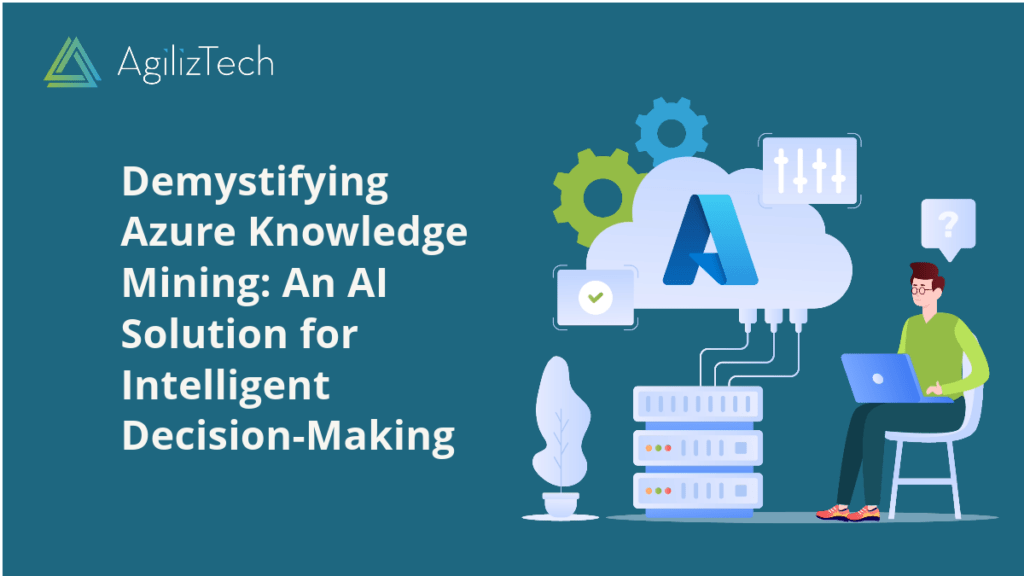
Azure Knowledge Mining: A Powerful AI Solution
Overview
Are you looking for a way to extract valuable insights from your data, regardless of its format, location, or complexity? Do you want to leverage the power of artificial intelligence (AI) to search, analyze, and explore your content at scale? If so, you might be interested in Azure Knowledge Mining, an emerging discipline in AI that uses a combination of intelligent services to quickly learn from vast amounts of information.
What is Azure Knowledge Mining?
According to Microsoft, knowledge mining is “an emerging discipline in artificial intelligence (AI) that uses a combination of intelligent services to quickly learn from vast amounts of information. It allows organizations to deeply understand and easily explore information, uncover hidden insights, and find relationships and patterns at scale.”
Azure Knowledge Mining is the Microsoft solution for knowledge mining, based on Azure Cognitive Search, the only cloud search service with built-in AI capabilities. Azure Cognitive Search enables you to ingest content from various sources, enrich it with AI skills such as natural language processing, computer vision, and machine learning, and explore it through search, bots, applications, and data visualizations.
What are the benefits?
Azure Knowledge Mining can help you gain faster insights from diverse content types, customize your solution for your industry needs, and enable knowledge extraction wherever your data lives. Some of the benefits of Azure Knowledge Mining are you can:
- Ingest content from Azure sources like Azure Blob storage, Azure Table storage, Azure SQL Database, Azure Cosmos DB, and hundreds of third-party sources via dedicated connectors.
- Extract text-based content from file formats such as PDF, Microsoft Word, PowerPoint, and CSV. See the full list of supported formats.
- Enrich the content with AI skills to extract information, find patterns, and deepen understanding. For example, you can extract entities, key phrases, sentiments, locations, languages, images, audio, and more from your content.
- Apply machine learning models as custom skills for specific requirements like industry-specific regulations or custom entity extraction.
- Explore the newly indexed data via search, bots, existing business applications, and data visualizations. You can also use semantic search to understand user intent and contextually rank the most relevant search results for users.
How to use Azure Knowledge Mining?
To use Azure Knowledge Mining, you must follow three steps: ingest, enrich, and explore.
- Ingest: You need to create an Azure Cognitive Search service in the Azure portal and connect it to your data sources using indexers or push APIs. You can also use the Import data wizard in the portal to quickly create an index from your data source.
- Enrich: You must define a skillset specifying the AI skills you want to apply to your content. You can use predefined cognitive skills or custom skills that you create using Azure Machine Learning or other tools. You can also use the Knowledge Store feature to project enriched documents into tables or objects for further analysis.
- Explore: You need to create a search index that stores the enriched documents and enables fast and flexible querying. You can use the Search explorer in the portal to test your queries and see the results. You can also use the Azure Cognitive Search SDKs or REST APIs to integrate search functionality into your applications or services.
Conclusion
Azure Knowledge Mining is a powerful AI solution that can help you uncover latent insights from all your content. You can use Azure Cognitive Search and other Azure AI services to ingest, enrich, and explore your data at scale and deliver enhanced experiences to your users and customers.
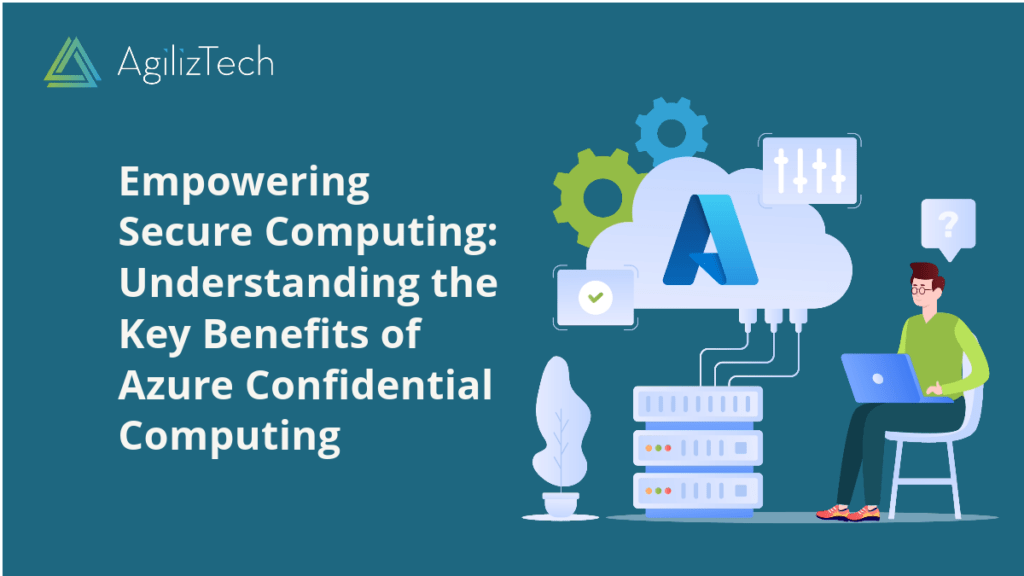
Azure Confidential Computing: Key Benefits
Overview
Azure confidential computing comprises technologies that safeguard your data and models at every stage of the AI lifecycle, even when in use. This allows you to execute AI workloads with sensitive data without risking unauthorized access or tampering. In this blog post, we’ll explore what Azure confidential computing offers, its advantages, and how you can employ it to develop secure AI solutions.
What is Azure Confidential Computing?
Azure confidential computing is grounded in the concept of trusted execution environments (TEEs). TEEs are hardware-protected memory areas that isolate code and data from the rest of the system. They thwart access or modification by anyone, including cloud operators, malicious admins, or privileged software like the hypervisor. TEEs also offer cryptographic attestation, validating the integrity and identity of the code within.
It supports two TEE types: software-based and hardware-based. Software-based TEEs use techniques like encryption and sandboxing, creating isolated environments. Hardware-based TEEs utilize dedicated hardware features like secure enclaves or protected memory, ensuring more robust isolation. Azure provides both TEE types through various services and VM sizes.
Advantages Confidential Computing
It provides several advantages for AI developers and users:
- Protecting data and models in use: Run AI workloads with sensitive data (e.g., personal, financial, or health information) without exposing them to unauthorized access or tampering. Safeguard model architecture and weights from theft or reverse-engineering.
- Enabling new scenarios and collaborations: Unlock new possibilities for AI applications demanding high security and privacy. Enable multi-party training and federated learning without sharing data or models centrally.
- Increasing trust and compliance: Boost trust and transparency in your AI solutions by offering verifiable proof of data and model protection. Comply with regulations such as GDPR or HIPAA mandating data privacy and protection.
How to Utilize Azure Confidential Computing for AI?
The Confidential Computing offers multiple services and tools for building AI solutions with TEEs. Here are some examples:
- Azure Machine Learning: Train and deploy AI models using hardware-based TEEs (e.g., Intel SGX or AMD SEV). Orchestrate federated learning across edge devices or cloud nodes.
- Azure Cognitive Services: Access pre-built AI models for vision, speech, language, and decision-making using software-based TEEs (e.g., Open Enclave SDK or Intel SGX). Customize these models securely with your data.
- NVIDIA GPU VMs: Run GPU-accelerated AI workloads using hardware-based TEEs (e.g., NVIDIA A100 Tensor Core GPUs with Ampere Protected Memory). Ensure data and model confidentiality and integrity while harnessing GPU performance.
- Microsoft Research Confidential AI: Explore cutting-edge research projects and tools that delve into the confidential computing frontier for AI. Examples include CrypTFlow2 for secure multi-party computation on encrypted data and CryptoNets for encrypted model inference.
Conclusion
Azure confidential computing empowers you to safeguard your data and models throughout the AI lifecycle, even during use. With Azure confidential computing, you can create trustworthy AI solutions that deliver security, privacy, collaboration, and compliance benefits. To delve deeper into Azure confidential computing and get started, click here.
Microsoft Sales Copilot: Sales Team Empowerment
Overview
Do you want to streamline your sales process and improve your customer relationships? If you do, you should check out Microsoft Sales Copilot, the AI assistant designed for sellers.
Microsoft Sales Copilot is a smart CRM companion with Dynamics 365 Sales or Salesforce Sales Cloud. It helps you automate and simplify tasks, personalize customer interactions, and stay in the flow of work by integrating with Microsoft 365 apps, such as Outlook and Teams.
In this blog post, we will explore some of the features and advantages of Sales Copilot. We will also show you how to get started with this powerful tool.
What You Can Do with Microsoft Sales Copilot
The Sales Copilot offers a range of AI capabilities to help you drive efficiency and effectiveness in your sales process. With Sales Copilot, you can:
- Draft emails and set up meetings in Outlook with data from your CRM and Microsoft 365 using AI.
- Save AI-generated email and meeting summaries in Teams, Outlook, and Dynamics 365 Sales directly to your CRM.
- Eliminate note-taking with AI-generated meeting transcriptions, competitor mentions, and action items in Teams and Dynamics 365 Sales.
- Get AI assistance for suggested tips, related information, and answers to customers’ questions during Teams calls.
- Build stronger customer relationships with real-time call insights, content recommendations, and post-call analysis to improve future interactions.
- Sync updates in Teams and Outlook to your CRM automatically to maintain accurate customer records.
- View a summary of your customer information in Microsoft 365 apps using data from your CRM.
- Work together with disparate sales teams using Teams collaboration spaces that offer integrated access to Dynamics 365 Sales and Salesforce data.
How Sales Copilot Benefits You
The Sales Copilot can help you achieve several benefits for your sales performance and customer satisfaction. Using it, you can:
- Save time and reduce errors by automating and simplifying tasks that would otherwise require manual data entry or context switching.
- Increase productivity and focus by eliminating distractions and staying in the apps you use daily.
- Enhance communication and collaboration by sharing relevant information and insights with your team members and managers.
- Improve customer experience and loyalty by delivering personalized and timely responses, suggestions, and follow-ups.
- Boost sales effectiveness and outcomes by leveraging AI insights and recommendations to optimize your sales strategy and tactics.
How to Get Started
If you are interested in trying out Sales Copilot, here are some steps you can take to get started:
- Check if you have the required licenses for Microsoft Sales Copilot. You need a product license for Microsoft 365 for enterprise or Office 365 for enterprise and a subscription for Dynamics 365 Sales Enterprise or Premium or Salesforce Sales Cloud.
- Install Microsoft Sales Copilot from this link.
- Connect your CRM account (Dynamics 365 or Salesforce) to Microsoft Sales Copilot.
- Start using Microsoft Sales Copilot in Outlook or Teams.
For more information on installing and using Sales Copilot, click support page.
Conclusion
Microsoft Sales Copilot is a powerful AI assistant that can help you streamline your sales process and improve customer relationships. It works with Dynamics 365 Sales or Salesforce Sales Cloud and integrates with Microsoft 365 apps, such as Outlook and Teams, to help you automate and simplify tasks, personalize customer interactions, and stay in the flow of work.
If you want to boost your sales productivity and effectiveness, try it. You can start by installing Microsoft Sales Copilot from this link and connecting your CRM account.




















